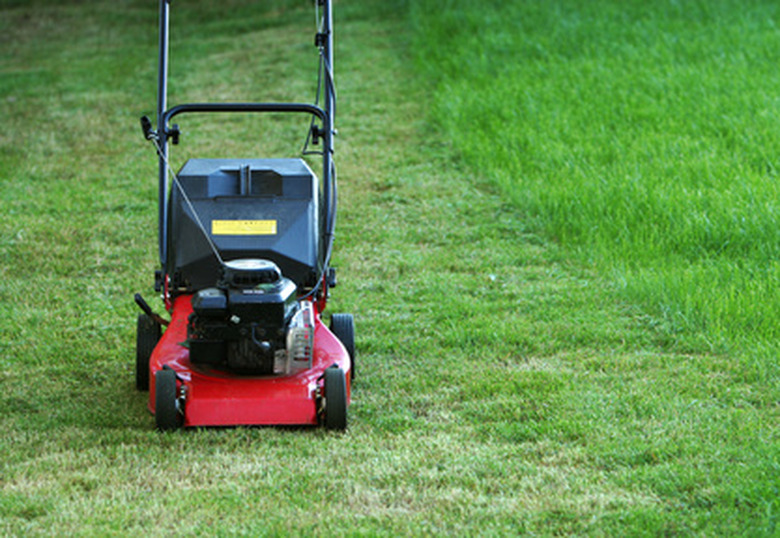Signs & Symptoms Of A Blown Lawn Mower Head Gasket
In gasoline-powered lawn mower engines, the head gasket, which separates the cylinder head from the engine block, is a regulator of sorts. Not only does it prevent coolant and oil from mixing; it seals in the internal combustion process. If the head gasket's seals are weakened or if the gasket head has blown, your lawn mower will fail to operate at full power. To diagnose a blown head gasket, look for certain troubleshooting signs.
Low Power
Low engine power in a lawn mower can be caused by wear and tear, lack of oil or regular maintenance, worn-out seals or a blown head gasket. The only accurate method to confirm suspicions of a blown gasket head is to conduct a compression test.
Failed Compression Test
If the lawn mower has lost power or has an oil leak around the head gasket seal, a sure way to diagnose a blown gasket seal is through a compression test. Many auto repair and small engine repair shops carry compression gauges, which measure the internal combustion pressure of the lawn mower engine. Before you begin measuring the internal pressure of the combustion chamber, pull the starter cord several times. If the engine reads at least 60 psi (pounds per square inch), then the compression is within range. If the pressure is less than 60 psi, shoot a little engine oil into the spark plug hole so it coats the cylinders and pistons. Measure the pressure again. If there's no change in the pressure, the lawn mower probably has a blown gasket head.
- In gasoline-powered lawn mower engines, the head gasket, which separates the cylinder head from the engine block, is a regulator of sorts.
- If the lawn mower has lost power or has an oil leak around the head gasket seal, a sure way to diagnose a blown gasket seal is through a compression test.
Diminished Compression
The head gasket, a pre-cut, steel plate bolted between the cylinder head and the engine block, creates a vacuum seal in the engine's combustion chamber. If the head gasket is cracked, if bolts are loose or missing or if any seals in the gasket are compromised, the combustion chamber can lose its vacuum seal. When gasoline is combusted in the combustion chamber, the energy released and sustained powers the pistons. If the head gasket has blown, pressure from the gasoline combustion will leak and won't provide full power.
Oil Leak
To maintain normal compression levels in a lawn mower engine, all head gasket seals must be in optimal shape. Over time, seals can dry out and become brittle. Oil leaking around the head gasket seals is sometimes a sign of a blown gasket. While a liquid sealant may stop oil leaks, it's a temporary fix. Dried-out head basket seals must be replaced to maintain optimal engine compression.
- The head gasket, a pre-cut, steel plate bolted between the cylinder head and the engine block, creates a vacuum seal in the engine's combustion chamber.
- If the head gasket is cracked, if bolts are loose or missing or if any seals in the gasket are compromised, the combustion chamber can lose its vacuum seal.
